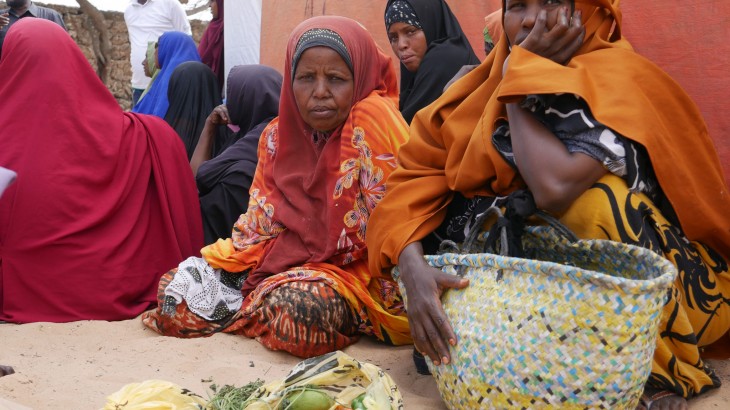The share of Minnesota kindergarteners who are up-to-date on the vaccines that ward off measles, mumps and rubella has seen a small decline in recent years, dropping from 93.7 percent to 92.5 percent between 2014 and 2017, according to data from the Minnesota Department of Health. (Nationally, the rate is around 91 percent.)
That’s not great, but it’s probably not a huge cause for alarm. Despite a rash of anti-vaccine sentiment pumped up by debunked theories linking the MMR vaccine to autism, experts say a vaccination rate in the 90 percent to 95 percent range, is typically enough to prevent outbreaks.
But that high statewide average hides much lower vaccination levels in some corners of the state. In some school districts, the vaccination rate is less than half the state average, leaving kids vulnerable to illnesses public health officials say can be deadly and should be preventable.
Outbreak
An outbreak of a vaccine-preventable disease isn’t a theoretical fear. This year, 15 stateshave seen cases of measles, a highly contagious and sometimes deadly childhood disease that had been all but eradicated in the U.S. until recently.
In the spring and summer of 2017, Minneapolis saw a major outbreak of measles. The disease took hold in the city’s Somali community, susceptible due to decreased rates of childhood immunization.
Between 2004 and 2014, the rates of MMR immunization at two years of age in Hennepin County’s Somali community had declined, from more than 90 percent to about 40 percent. A Centers for Disease Control report attributed the decline to “concerns about autism, the perceived increased rates of autism in the Somali-American community, and the misunderstanding that autism was related to MMR.” In recent years, prominent members of the anti-vaccine movement have visited Minneapolis, drawing ties between the MMR vaccine and autism, a claim with no scientific basis.
 |
| Mariam Osman, of Rochester, holds her four-month-old son, Mohamed Abdi-son, while listening during the community forum about measles hosted by the Somali Health Advisory Committee on Monday, May 22, 2017, at Olmsted County Public Health Services in Rochester. PHOTO: Andrew Link / alink@postbulletin.com |
The outbreak was costly. All told, there were 65 patients, and the outbreak cost Hennepin County and the Minnesota Department of Health $1 million, said Kris Ehresmann, director of the infectious disease division at MDH.
Vaccination rates shouldn’t get that low. Under Minnesota law, kids are required to be vaccinated against a battery of illnesses in order to attend school or licensed childcare facilities.
Unless, that is, their doctor believes they have a medical condition, such as an immune system that can’t handle a vaccine, or an allergy to a vaccine’s components, or have a notarized “conscientiously held belief” statement that declares an objection to vaccines.
The state has allowed non-medical exemption to vaccines in one form or another since 1967. The “conscientiously held beliefs” language was added to statute in 1978, according to MDH.
Whether to vaccinate kids or not is sometimes framed as a personal choice, but it has major implications for public health. The state requires vaccines because of a concept called herd immunity: If 97 percent of a population is vaccinated against a given disease, the 3 percent who are not — say, for medical reasons — run a much lower risk of bumping into someone with the disease than they would in an unvaccinated community. If 50 percent of the people in a community are unvaccinated, someone with a compromised immune system is at a much higher risk of contracting a preventable, and potentially life-threatening, disease.
You want to have a threshold level — above 90 percent or more — to make sure that you have enough people vaccinated so if disease is introduced, it really can’t get a foothold,” Ehresmann said.
Varied rates
Statewide, Minnesota kindergartners meet that threshold for widespread protection, at a 92 percent vaccination rate for chickenpox; a 93 percent vaccination rate for diphtheria, tetanus, and whooping cough (DTaP), polio, and MMR; and a 95 percent vaccination rate for hepatitis B.
MMR Vaccination rate for Minnesota school districts and charters, 2017–18
Source: Minnesota Department of Health
Some districts exceed the state average. Schools in the Cass Lake-Bena district, on the Leech Lake Band of Ojibwe reservation in North-Central Minnesota, have a near perfect score when it comes to kindergarten vaccination rates, according to state data.
Melissa Jenson, the district’s nurse, said a community effort that includes the schools, parents and public health, helps ensure kids are vaccinated.
District leadership is committed to following the state’s immunization requirements, she said, barring students who are not vaccinated and don’t have an exemption on file from attending school.
“We ensure all students are up-to-date. If they aren’t, they are excluded until proper documentation has been received, whether it is the immunization records, or documentation of conscientious beliefs or medical exemption,” she said.
Under Minnesota law, enforcing vaccine requirements comes down to school districts — the state doesn’t receive notification when a student hasn’t had their vaccines — but some districts enforce the state law better than others, said Ehresmann, of the Department of Health.
Jenson says the high vaccination rate also comes down to the availability of services and the diligence of Indian Health Service and other health providers in the area.
In her five years in the district, Jenson says she’s only had a handful of parents question the vaccination requirement or decide not to vaccinate their kids.
“They are concerned, they want to protect their children from harmful disease and they really value protecting the health of the community,” she said.
Not every school district has vaccination rates as high as Cass Lake-Bena’s.
In the 2017-18 school year, Hill City, south of Grand Rapids, Minnesota, had a vaccination rate of 47 percent for MMR. Upsala, northwest of St. Cloud, has a 55 percent vaccination rate, according to data from the Minnesota Department of Health.
Some charter schools, classified in state data as districts, had rates as low as 36 percent, as in the case of Best Academy, in North Minneapolis, and Art and Science Academy in Isanti.
There aren’t a lot of clear patterns in who vaccinates their kids and who doesn’t, Ehresmann said. It doesn’t align with a set of political beliefs or socioeconomic status.
The Department of Health looked at data by mothers’ country of origin and found mothers born in Eastern Europe, Western Europe, Canada and Somalia were less likely to vaccinate their kids than U.S.-born moms. But mothers born in African countries other than Somalia, and those born in Central America, South America, the Caribbean and Mexico were more likely to vaccinate their kids than U.S.-born moms.
Money shouldn’t be a barrier, since the federal government provides free vaccines to kids without health insurance through a program called Vaccines for Children. But sometimes transportation can be an issue. And since getting vaccines requires setting up appointments, some parents decide it’s easier to get the conscientious belief exemption form notarized and turned in, Ehresmann said.
In California, some of the schools with the lowest vaccination rates are in wealthy counties north of San Francisco.
Legislative proposal
This legislative session, Rep. Mike Freiberg (DFL-Golden Valley) introduced a bill aimed at reducing disparities in vaccination rates.
HF 1182 would establish a Minnesota Department of Health-administered grant program to help communities at risk of disease outbreak. It would provide money to community health organizations in such areas to raise awareness of vaccines using Centers for Disease Control educational material. The bill was heard in the House’s health and human services policy committee and now awaits a hearing in health and human services finance. Its Senate companion, SF 1629, awaits a hearing in the Senate health and human services finance and policy committee (another bill, SF 152o, would eliminate the conscientiously-held belief exception).
In the past, Freiberg put forth legislation that would tighten up requirements surrounding the conscientiously-held belief exemption to vaccines. While nearly all states have a religious exemption, which generally require parents to prove vaccines violate a tenet of their religion, Minnesota is one of 17 states that has a looser philiosophical belief exemption, according to the National Conference of State Legislatures.
That approach didn’t pass, so this bill focuses on raising awareness and providing science-backed information to communities where vaccine rates are low.
“There’s a lot of misinformation out there when it comes to vaccines,” Freiberg told MinnPost.











